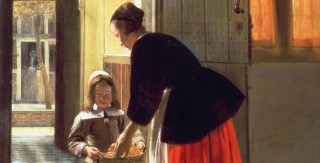Dutch painting of the Golden Age
Discover the hidden depths of seventeenth-century Dutch painting. Explore debates, iconology, realism, and the importance of context in interpreting art. Analyze artworks with different ideas and approaches.
Seventeenth-century Dutch painting stands out from other art of the same period and even more so from that of previous centuries on account of its apparently ‘everyday’ character. Works by artists such as Johannes Vermeer, Pieter de Hooch and Jacob van Ruisdael seem to offer a faithful picture of life in the Netherlands at the time. In studying this free course, Dutch painting of the Golden Age, you will discover that there is much more to Dutch painting than meets the eye. You will explore scholarly debates about the possible meanings that might be attributed to this type of picture and learn how the very idea of ‘realism’ in art has been challenged in recent times.
Course learning outcomes
After studying this course, you should be able to:
Explore recent debates around the interpretation of seventeenth-century Dutch painting
Consider the strengths and limitations of iconology as an art-historical approach
Examine the notion of ‘realism’ as applied to works of art
Address the relevance of social and cultural context for interpreting works of art
Analyse works of art in terms of different ideas and approaches.
User Reviews
Be the first to review “Dutch painting of the Golden Age”
You must be logged in to post a review.







There are no reviews yet.